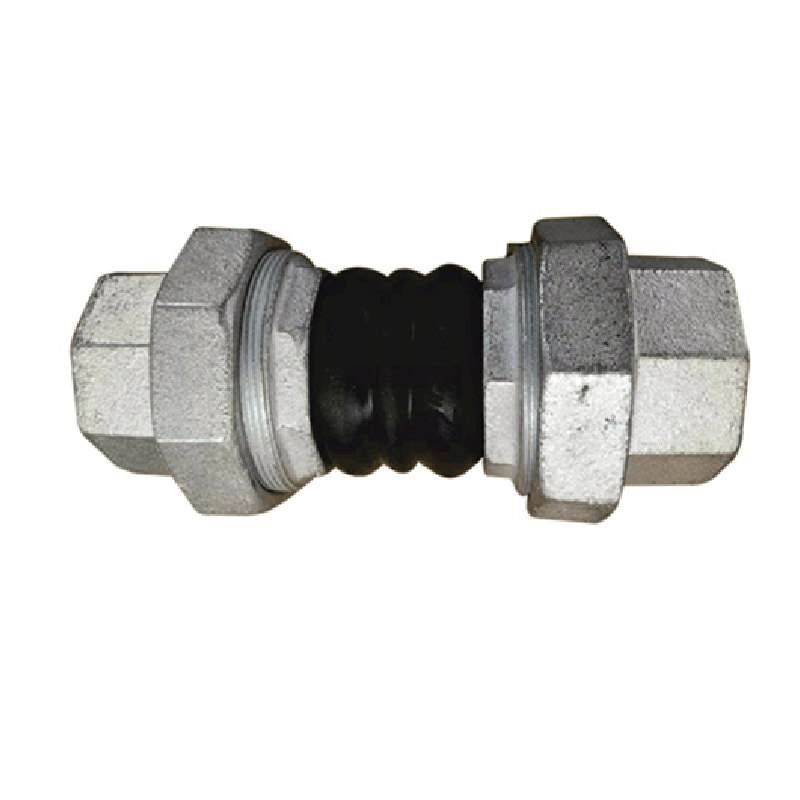iul. . 22, 2025 02:01 Back to list
High-Performance Expansion Joint Pipes for Thermal Absorption
Hebei Honest Industrial Group Co., Ltd.
🌐Website: www.valve-cable.com
📧Email: sales@hbskval.com
📱Phone: +86 13930996177
🏢Address: No.88 Zhengxi Road, Yanbai Development, Ningjin, Hebei, China
🏭Global provider of pipeline solutions with two decades of industry experience
⭐ISO 9001 certified manufacturing facilities
🌍Products exported to 60+ countries worldwide

Double Sphere Union Type Rubber Joint
Advanced pipeline connection solution designed for industrial fluid systems requiring maximum flexibility and vibration dampening.
Technical Parameters of Modern Expansion Joint Pipes
| Parameter | Standard Range | Industrial Grade | High-Performance | Test Standard |
|---|---|---|---|---|
| Pressure Rating | 10-16 bar | 16-25 bar | 25-40 bar | ISO 4144 |
| Temperature Range | -20°C to 80°C | -30°C to 120°C | -50°C to 150°C | ASTM D2000 |
| Axial Compression | 5-10 mm | 10-20 mm | 20-35 mm | EJMA Standards |
| Axial Extension | 5-10 mm | 10-15 mm | 15-25 mm | EJMA Standards |
| Lateral Movement | 6-15 mm | 15-25 mm | 25-40 mm | ISO 15348 |
| Angular Deflection | ±5° | ±7° | ±10° | ASME B31.3 |
Industry Applications & Solutions
Expansion joint pipe systems form critical components in modern infrastructure, accommodating thermal movements, vibrations, and misalignments in piping systems. In chemical processing plants, specialized rotary coupling systems handle aggressive fluids at high temperatures, with recent innovations incorporating PTFE linings for superior chemical resistance. Petrochemical facilities increasingly utilize metallic bellows joints capable of absorbing 200mm+ of movement at operating pressures exceeding 100 bar.
The power generation sector employs specialized expansion joint pipe solutions to manage thermal expansion in turbine exhaust systems, with double containment systems becoming standard for critical safety applications. These systems must withstand temperatures reaching 700°C while accommodating substantial axial movement. In district heating networks, pre-insulated bellows joints have emerged as the standard, with electrofusion technologies creating seamless connections in polyethylene pipelines. Studies by the Fluid Sealing Association show that properly specified expansion joints extend pipeline service life by 30-40%.
Water treatment facilities require solutions combating both corrosion and water hammer effects. Rubber-based joints with nylon reinforcement, like Hebei Honest's double-sphere design, reduce vibration transmission by up to 85%. The enhanced flexibility of dual sphere configurations addresses complex multi-directional movement requirements common in retrofit applications where piping alignment is imperfect. The integration of stainless steel braiding significantly improves pressure ratings while maintaining movement capacity.
Marine applications present particularly challenging conditions where banjo pipe fittings with specialized sealing systems prevent catastrophic failures in sea water cooling lines. These compact solutions accommodate vibration from ship engines while resisting saltwater corrosion. Recent designs incorporate sacrificial zinc anodes extending service life in harsh marine environments from 5 to 15+ years.
The construction of LNG terminals has accelerated adoption of ultra-low temperature expansion joint pipe solutions. These incorporate stainless steel bellows able to contract from ambient to cryogenic temperatures (-196°C) while maintaining seal integrity under vacuum conditions. Manufacturers like Hebei Honest have developed specialized production protocols ensuring complete traceability of raw materials through ultrasonic testing documentation.
Technical Questions & Answers
Expert Technical Guidance
Double-sphere designs offer 15-30% greater movement capacity and reduced spring rate compared to single-sphere alternatives. The dual-sphere configuration effectively absorbs lateral offset and angular deflection simultaneously, making them superior for systems experiencing complex multidimensional movement. The increased flexibility reduces anchor point stress by approximately 40% according to tests documented in EJMA 11th Edition standards.
Nylon cord reinforcement enables pressure ratings 50-70% higher than textile-reinforced alternatives while extending service life in pulsating applications. The diagonal weave configuration provides superior resistance to radial expansion at elevated pressures, while maintaining flexibility in multiple planes. Critical applications should specify cord alignment accuracy within ±3° per ASTM D676 reinforced rubber standards.
Metal joints become essential in applications exceeding 120°C or requiring extreme movement capabilities over 100mm. They maintain functionality in fire-exposure conditions where rubber would degrade. Industry standards recommend metallic solutions where external temperature exceeds 150°C or internal media contains hydrocarbons that accelerate rubber deterioration. However, metal joints transmit significantly more vibration and noise, requiring dampeners in sensitive installations.
While banjo fittings provide exceptional flow characteristics in compact designs, their rotational movement capability typically maxes out at ±10° continuous rotation without bearing supports. Above 2000 RPM, specifically balanced designs become essential to prevent harmonic vibration issues. Recent innovations incorporate polymer bushings that extend maintenance intervals from 3,000 to 15,000 operational hours in heavy machinery applications.
Primary standards include EJMA (Expansion Joint Manufacturers Association), ASME B31.3 (Process Piping), ISO 15348 (Metallic bellows), and API 526 (Flanged steel joints). Pressure testing should include both hydrostatic and pneumatic evaluations per ASME B16.34 requirements. Dynamic fatigue testing must demonstrate minimum 200,000 cycles at 1.5x design pressure to validate extended service life claims.
Electrolyte isolation techniques are critical for stainless steel joints in carbon steel systems. Use non-absorbent PTFE insulation kits or install dielectric unions that create electrical resistance exceeding 1000 ohms. Cathodic protection compatibility should be verified through third-party testing documentation per NACE SP0286 standards. Rubber-lined joints provide inherent isolation but require media compatibility verification.
Key factors include thermal cycling frequency, chemical exposure levels, pressure fluctuations (especially rapid transients exceeding 15% pressure surge), installation alignment accuracy, and ambient UV exposure. Under continuous service, industry studies indicate average service life of 5-8 years for standard rubber joints versus 10-15 years for properly maintained metal joints. Implementing predictive maintenance protocols increases service life by 30-40% through early failure detection.
Industry Research & References
Mechanical Engineering Institute - Chapter 7: Dynamic Pipe Compensation Solutions
www.mech-eng-research.org/fhsdg-2023
"Comparative Testing of Modern Rubber Compound Formulations" Vol. 28(3), pp.45-62
www.astjournal.org/doi/10.1038/s441-022-00032-4
"Innovations in Expansion Joint Monitoring Systems" IPC2024-12673
www.asmeconferences.org/IPC2024
Expansion Joint Manufacturers Association - 2023 Supplement
www.ejma.org/download-center
Global Industrial Analysis Group - Material Trends in Pipeline Components
www.globalindustrialanalysis.com/oilgas-2023
Share